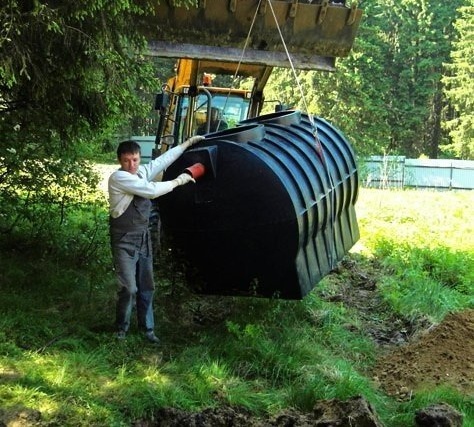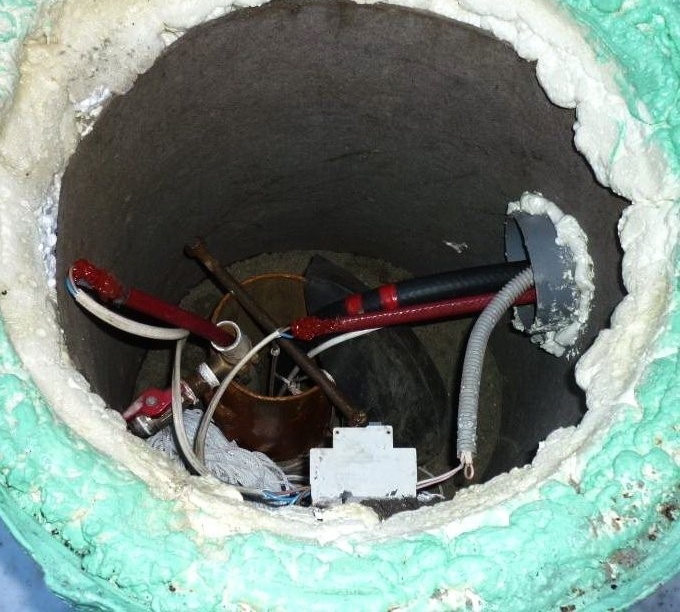Preservation of a septic tank and the rules for its operation in the winter
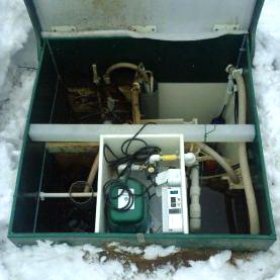
The owners of septic tanks are well aware that living microorganisms — aerobic and anaerobic bacteria — are working hard in these plastic containers underground. They perfectly process people's livelihoods, multiplying in parallel, and also supplying the household with practically clean water and properly disposed waste. But here comes winter and the septic septic tank remains unattended. What will happen to its miniature inhabitants? Is it possible to leave everything as it is? Maybe you should empty the septic tank, and start it again in the spring? But what if in winter you still need to visit the cottage sometimes?
Content
How to spoil a septic tank with an improper wintering?
Some owners of the septic tank made one fatal mistake: they completely drained the liquid from the septic tank. They probably drew a parallel with the heating system and feared that the drains would freeze, the water would expand and tear apart the plastic container. The result of such an initiative almost always turns out to be deplorable.
What can happen to an empty septic tank in the winter? And here is what:
- Option A. In the spring, when the groundwater level rises, the owner of the cottage will find an empty plastic container floating in the pit designed for it in full accordance with the law of Archimedes. (After all, the volume of the septic tank is significant, and its own physical weight is low, its water will easily push up). And this is not the worst option.
- Option B. The soil in which the septic tank is located, as you know, is not static. It moves under the influence of temperature changes, groundwater level, etc. The capacity of the septic tank undergoes significant physical exertion. It may well not withstand and just burst or otherwise be deformed.
As a result, the owners of the septic tank have to dismantle the sewage treatment plant, replace damaged equipment, install new ones, etc. It is not difficult to avoid such problems, one simple rule must be firmly remembered: you should never leave the septic tank empty in winter.
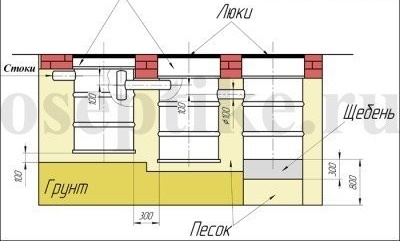
In this diagram, the device of a three-chamber septic tank composed of plastic containers is clearly demonstrated. When preserving such a device, a sufficient amount of liquid must remain in each container
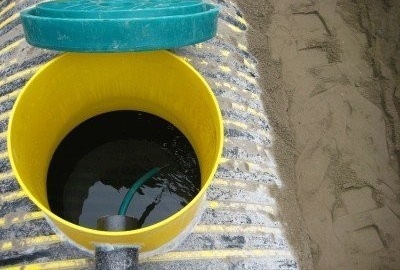
When preserving a septic tank for the winter, it is necessary to check the liquid level in the tank, it should be at least 75% of the total
How to preserve a septic tank for the winter?
If the purification station was purchased ready-made, instructions should be attached to it with a detailed description of the winter preservation of the septic tank.Here is the sequence of actions that are recommended to be performed by manufacturers of septic tanks "Topas":
- First you need to de-energize the station. To do this, use the automatic switch mounted somewhere in the house, and / or press the on / off button directly on the station building.
- After that, remove the air compressor. Since this device is mounted in the working compartment of the station using special clips, disconnecting it will be quite simple.
- If the treatment plant is equipped with a forced discharge system, it is necessary to dismantle the pump, with the help of which clean water is removed from the system.
- Then you need to check the liquid level in the septic tank. The optimal size of the septic tank before winter preservation is ¾ of the total volume.
- If the amount of liquid in the septic tank does not reach this value (which happens quite often), you need to add ordinary water to the tank to make up for the missing volume.
- It remains to insulate the lid of the septic tank by placing a layer of insulation (for example, foam or polystyrene foam) under a layer of stones that hide the lid of the septic tank.
The last point is not necessary if the winters in the area are not severe. A properly preserved and insulated septic tank will endure a winter cold without much damage to its inhabitants, since the temperature of the liquid inside the system will remain quite high.
In more detail, the process of warming the lid of a septic tank is presented in the video:
Some more useful tips for owners of industrial septic tank models:
- if the treatment plant is equipped with a sludge stabilizer with a built-in airlift, it is recommended to clean this department before preserving the septic tank;
- the receiving chamber of the septic tank should also be cleaned of solid accumulations;
- if there is no polystyrene at hand, insulate the lid of the treatment station with other suitable materials, such as dry grass, straw, mulch, etc.
Please note that preservation of the septic tank should begin closer to winter, when the soil is cold, possibly slightly frozen. This will slightly reduce the effect on the septic tank of changes in the soil caused by cooling.
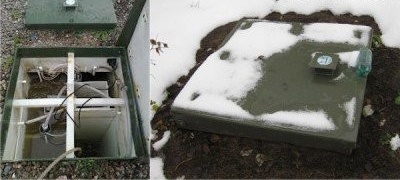
When preserving septic tanks for industrial production, the device must be de-energized and all electrical appliances removed. They are usually mounted in accessible places; dismantling requires minimal time and effort.
Some owners worry that inside the plastic container does not appear an ice crust on the surface of the liquid and does not damage the walls of the septic tank. These fears are justified only in areas with a sufficiently large depth of freezing. To prevent such a nuisance, several floats should be made for the septic tank. Making them is very simple:
- Find a few plastic bottles with a volume of 1.5-2 liters.
- Pour a little sand into each bottle so that part of the float remains on the surface when immersed in water. In this case, the bottle should maintain a vertical position.
- Tie a long rope to the neck of each float.
- Lower the floats into the container.
- Fix the rope so that when re-preserving the septic tank, the floats can be easily removed.
These simple steps will protect the septic tank from damage even during very severe frosts.
What do owners of a homemade septic tank do?
Many owners of country houses, especially summer residents, made a septic tank on their own, in order to save, using improvised means. Of course, no special instructions are attached to such a structure. How to preserve such a septic tank for the winter?

Expanded polystyrene is an excellent material for the insulation of a septic tank, but expensive. It can be replaced with dry leaves or straw. However, do not insulate the septic tank with sand or earth, as this may damage the equipment
Usually, improvised wastewater treatment plants do not have complex monitoring and control systems, so the conservation process will be easier here. To do this, you need:
- Unplug electrical equipment, if any.
- Remove pumps, compressors and other devices from the septic tank that may deteriorate during a long winter. (Of course, if there are no such devices in the septic tank, you can simply skip this item).
- Supplement the volume of liquid in the septic tank to a level of ¾ volume (some experts consider filling in 2/3 of the volume quite sufficient).
- Insulate the top of the septic tank with improvised materials: a layer of insulation, straw, dry foliage, etc.
Usually such preparation is enough for the septic tank to overwinter safely.
If plates of polystyrene foam or polystyrene are used to warm the septic tank, it is not necessary to strive to isolate the septic tank from frost as much as possible, since air should be provided for the normal functioning of aerobic bacteria. For this, a number of special holes can even be made in the insulation. If the polystyrene foam is protected by polyethylene on top, you will also need to make appropriate holes in it.
And if you still need a septic tank in winter?
According to experts, the winter preservation of a septic tank makes sense only if the house is left unattended for more than one month. And if the cottage is still visited every 2-3 weeks, the treatment facilities will be wintered perfectly without special precautions.
For example, the same Septic tank Topas calmly tolerates the absence of effluents for two weeks, the bacteria remain alive, active and reproduce quite successfully. The energy consumption of such a system is not at all high, so the bills for the electricity used by the septic tank will not ruin the owners, and the comfort level in the country will remain the same.
Technology of spring re-preservation of a septic tank
In the spring, the septic tank must be properly mothballed. For this, almost all operations that were carried out during conservation should be done in the reverse order:
- remove a layer of insulation;
- take out the floats;
- install pumps, compressors and other equipment;
- connect power supply.
After this, the septic tank can be used as usual. After a few days of use in normal mode, the system will return to normal. Usually, it is not necessary to add new bacteria to the septic tank.
